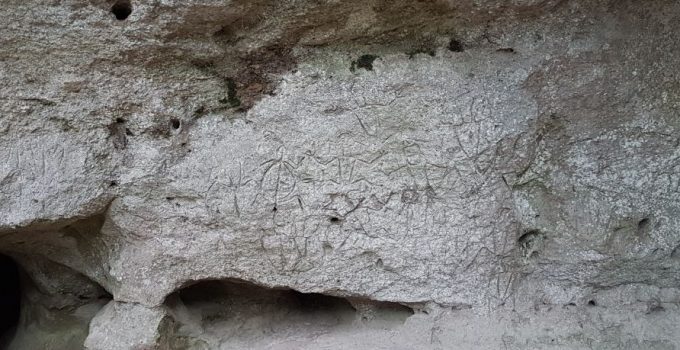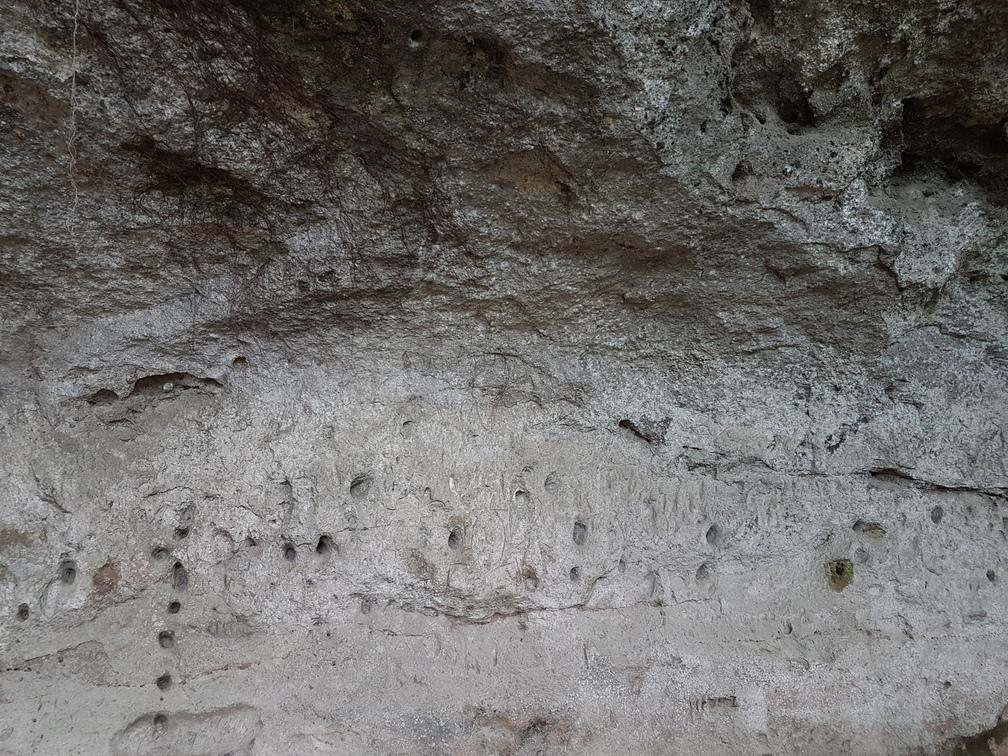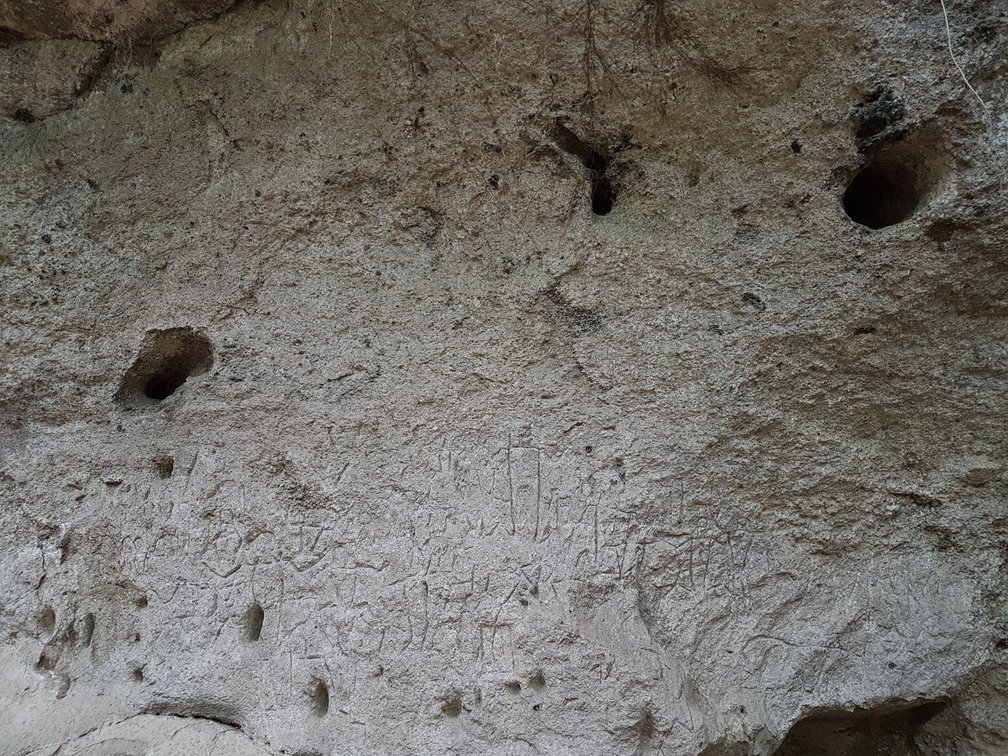At this time of uncertainty, it will be best to contact tourism office prior to visiting any tourist spot.
Angono Cave arts never failed to amaze me. Whenever I see these work of arts, I’m imagining how rich the ancient culture was. I was also thinking about how they lived, and how our nature looked like when it was untortured.
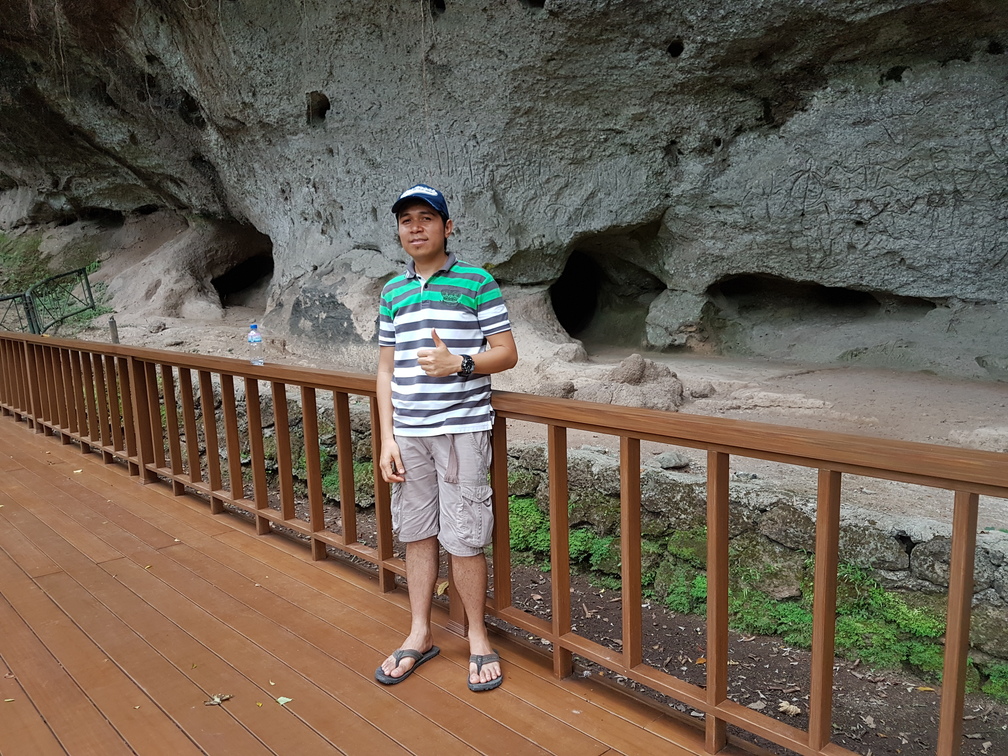
Angono, Rizal is my hometown, it’s pretty easy for me to visit this place. I was in high school when I first visited this with friends. I’m alone this time and probably this is my fifth visit in Angono Cave. This is also known as Angono Petroglyphs but some people in Angono doesn’t know what that is (that’s a bit odd).
When I get to Angono cave, the little museum is empty. The museum had fossils, old Ming Dynasty Wares, etc. I asked the caretaker and he said that the National Museum authority already took it to the National Museum. He didn’t provide further details though. Probably it’s for the security of those treasures. The only thing that you will see inside the museum is this tarpaulin with printed details about Angono Cave. Please don’t get confused with the museum and the rockshelter. Of course, the rockshelter (where the work of arts are etched) cannot be moved.
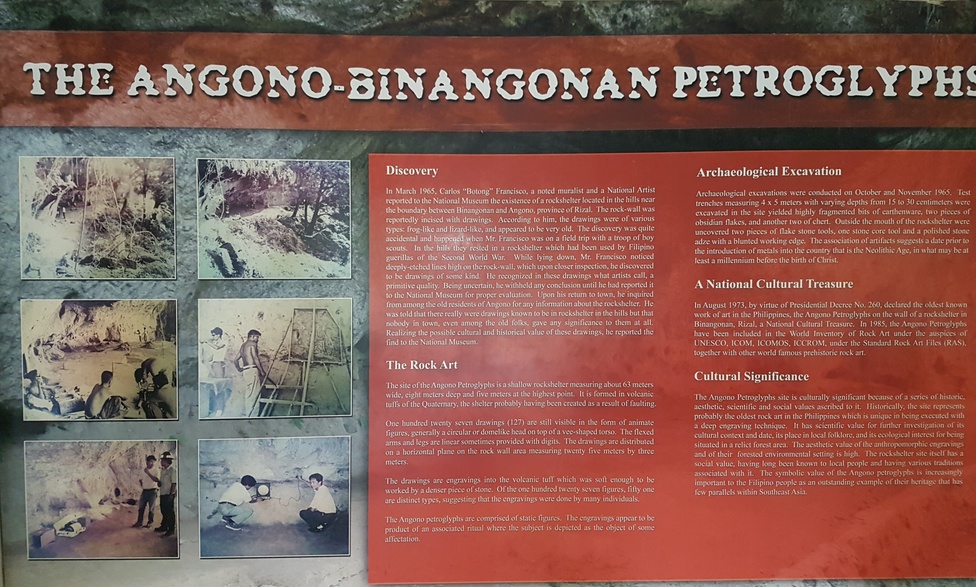
Angono Cave Print inside the museum
What’s something new here are the picnic tables at the back of the museum.
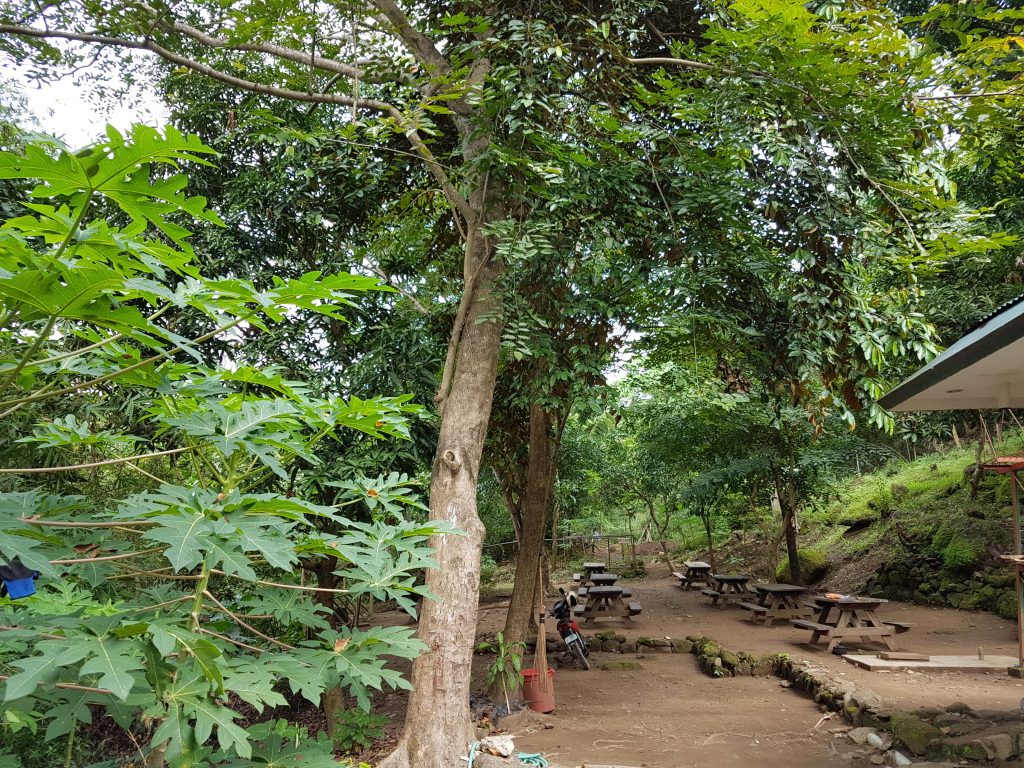
Picnic tables at the back of the museum
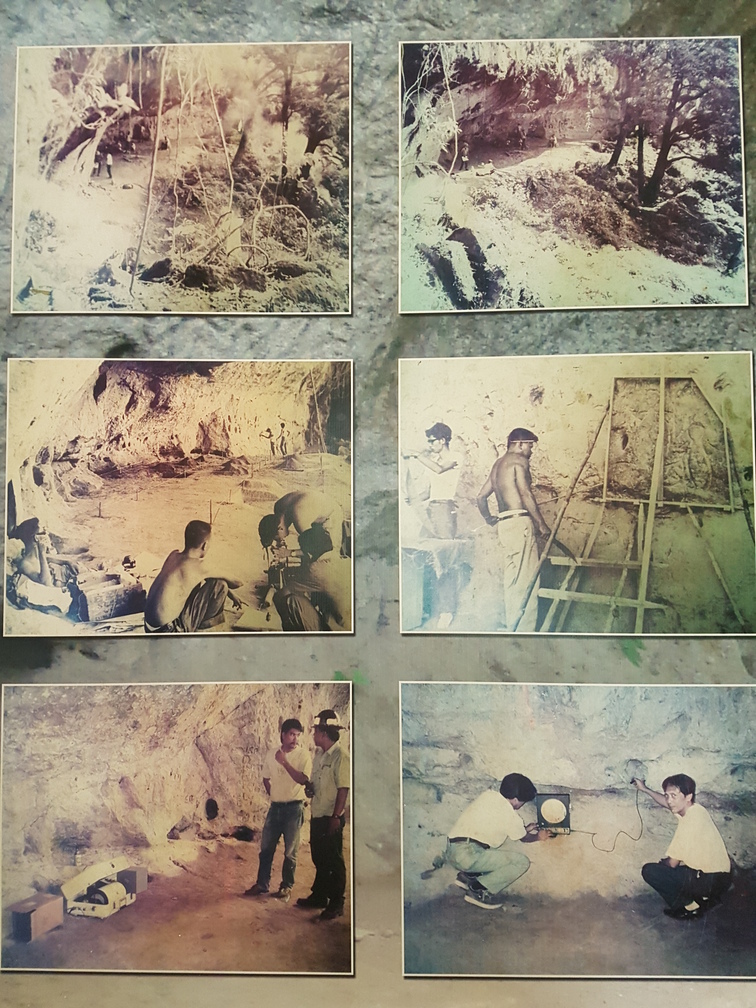
For easy reading, I’ll include the information printed in Angono Cave museum.
THE ANGONO-BINANGONAN PETROGLYPHS (ANGONO CAVE)
DISCOVERY
- In March 1965, Carlos “Botong” Francisco, a noted muralist and a National Artist reported to the National Museum the existence of a rockshelter located in the hills near the boundary between Binangonan and Angono, province of Rizal. The rock-wall was reportedly incised with drawings. According to him, the drawings were of various was quite accidental and happened when Mr. Francisco was on a field trip with a troop of boy scouts. In the hills, they rested in a rockshelter which had been used by Filipino guerillas in the Second World War. While lying down, Mr. Francisco noticed deeply-etched lines high on the rock-wall, which upon closer inspection, he discovered to be drawings of some kind. He recognized in these drawings what artist call, a primitive quality. Being uncertain, he withheld any conclusion until he had reported it to the National Museum for proper evaluation. Upon his return to town, he inquired from among the old residents of Angono for any information about the rockshelter. He was told that there really were drawings known to be in the rockshelter in the hills but that nobody in town, even among the old folks, gave any significance to them at all. Realizing the possible cultural and historical value of these drawings, he reported the find to the National Museum.
THE ROCK ART
- The site of the Angono Petroglyphs is a shallow rockshelter measuring about 63 meters wide, eight meters deep and five meters at the highest point. It is formed in volcanic tuffs of the Quaternary, the shelter probably having been created as a result of faulting.
- One hundred twenty seven drawings (127) are still visible in the form of animate figures, generally a circular or domelike head on top of a vee-shaped torso. The flexed arms and legs are linear sometimes provided with digits. The drawings are distributed on a horizontal plane on the rock wall area measuring twenty five meters by three meters.
- The drawings are engravings into the volcanic tuff which was soft enough to be worked by a denser piece of stone. Of the one hundred twenty seven figures, fifty one are distinct types, suggesting that the engravings were done by many individuals.
- The Angono Petroglyphs are comprised of static figures. The engravings appear to be a product of an associated ritual where the subject is depicted as the object of some affection.
ARCHAEOLOGICAL EXCAVATION
- Archaeological excavations were conducted in October and November 1965. Test trenches measuring 4 x 5 meters with varying depths from 15 to 30 centimeters were excavated in the site yielded highly fragmented bits of earthenware, two pieces of obsidian flakes, and another two of chert. Outside the mouth of the rockshelter were uncovered two pieces of flake stone tools, one stone core tool and a polished stone adze with a blunted working edge. The association of artifacts suggests a date prior to the introduction of metals into the country that is the Neolithic Age, in what may be at least a millennium before the birth of Christ.
A NATIONAL CULTURAL TREASURE
- In August 1973, by virtue of Presidential Decree No. 260, declared the oldest known work of art in the Philippines, the Angono Petroglyphs on the wall of rockshelter in Binangonan, Rizal, a National Cultural Treasure. In 1985, the Angono Petroglyphs have been included in the World Inventory of Rock Art under the auspices of UNESCO, ICOM, ICOMOS, ICCROM, under the Standard Rock Art Files (RAS), together with other world famous prehistoric rock art.
CULTURAL SIGNIFICANCE
- The Angono Petroglyphs site is culturally significant because of a series of historic, aesthetic, scientific and social values ascribed to it. Historically, the site represents probably the oldest rock art in the Philippines which is unique in being executed with a deep engraving technique. It has scientific value for further investigation of its cultural context and date, its place in local folklore, and its ecological interest for being situated in a relict forest area. The aesthetic value of the anthropomorphic engravings and of their forested environmental setting is high. The rockshelter site itself has a social value, having long been known to local people and having various traditions associated with it. The symbolic value of the Angono petroglyphs is increasingly important to the Filipino people as an outstanding example of their heritage that has few parallels within Southeast Asia.
How to get to Angono Petroglyphs or Angono Cave from the town proper
Well, since I’m from Angono, Rizal. I just walked from Phase II subdivision to the Angono Cave. It took me 1 hour and 30 minutes to reach Angono Cave (with at least 15-minute break). Honestly, I don’t know another way of how to get there aside from driving a motorcycle and/or walking. Prior to your visit, it will be best to contact the following:
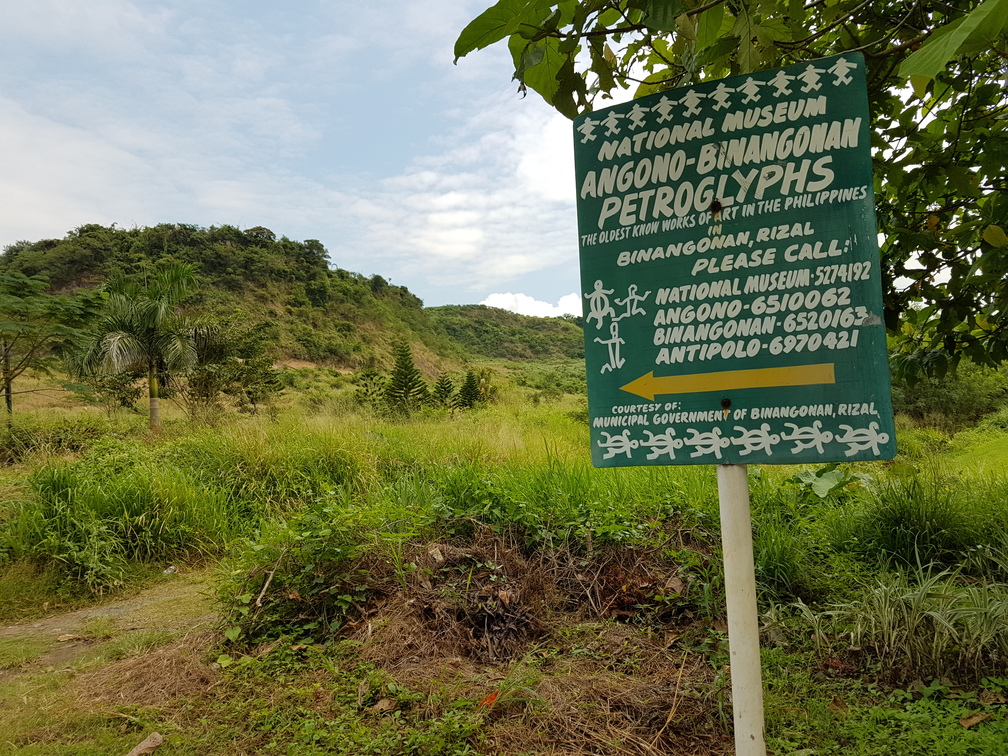
National Museum: +63 2 527 4192 Angono: +63 2 651 0062 Binangonan: +63 2 652 0163 Antipolo: +63 2 697 0421
But if you’re willing to walk, you’ll surely enjoy the view of Laguna Lake, and a lot of luscious green trees. Just be advised that from Una Monte subdivision, the assault will start and probably will just take 15 minutes until you reach Eastridge subdivision. Just let the security guard know that you’re visiting Angono Petroglyphs or Angono Cave.
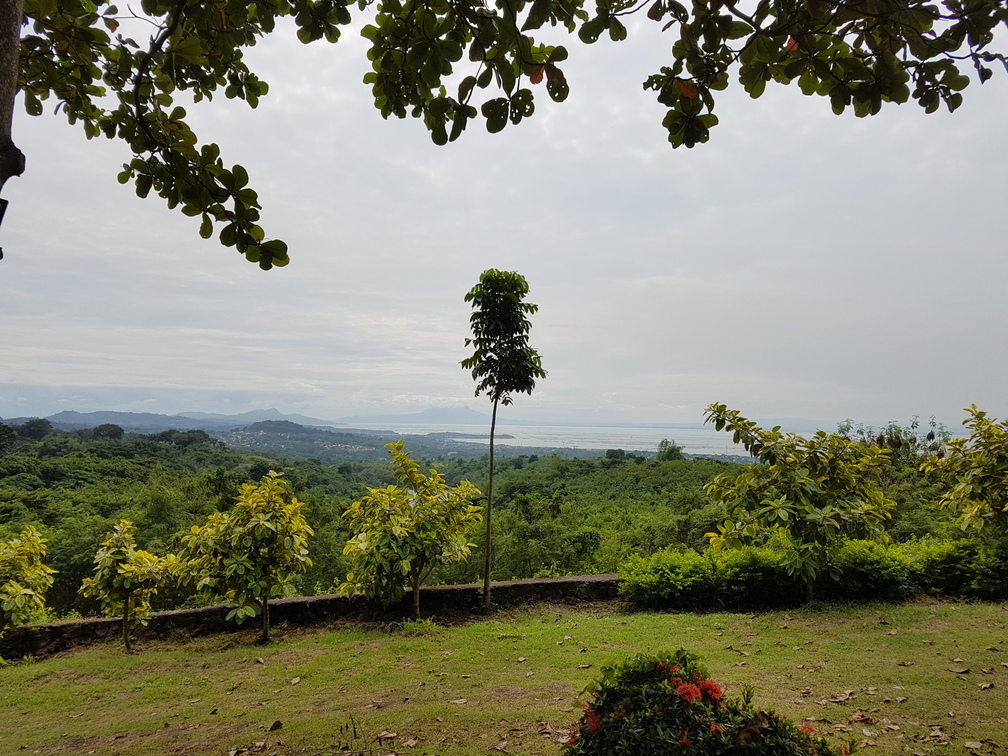
Laguna Lake View – I reached this spot after 1 hour and a 20-minute walk.

Tunnel, bound to Angono Petroglyphs
This is definitely a must-see when you are near Manila or if you’re in Angono, Rizal.
How to get to Angono Cave from Manila
You can go to Megamall, Robinson’s Galleria, or Starmall.
Look for UV Express bound to Binangonan.
Fare: PHP 50
Travel Time: 1 to 1.5 hours (depending on traffic condition)
Ask the driver to drop you off at Scrapyard Restaurant. When you get there, just cross the street or the national road (you’ll see 7-11). You can then ride a tricycle bound to Phase II subdivision. And from there, you can start walking.
Share your experience
Have you visited this place yet? How was your visit? Please leave your comments below 😉
